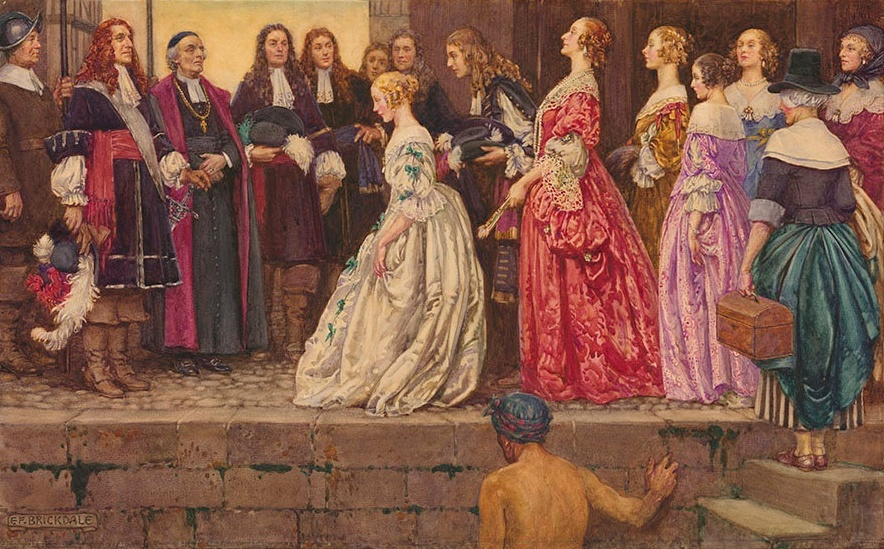Most French Canadians Are Descended from the Filles du Roi: The Remarkable Story of New France's Pioneer Women
If you have French-Canadian ancestry, there’s a good chance your family tree includes at least one fille du roi—or perhaps even dozens. These women, whose title translates to "Daughters of the King," played a pivotal role in shaping the population of New France, the territory now known as Québec. Intriguingly, several filles du roi have documented genealogical lines tracing back to Charlemagne and other European royals, making many modern French Canadians direct descendants of these illustrious figures.
Who Were the Filles du Roi?
The filles du roi were young French women who emigrated to New France between 1663 and 1673 under a program initiated by King Louis XIV. The king's goal was clear: to encourage settlement, promote marriages, and boost population growth in the fledgling colony. At the time, New France was sparsely populated and predominantly male. Early settlers included fur trappers, priests, soldiers, and adventurers, but the lack of French women created social and demographic challenges.
As Jesuit priests discouraged intermarriage with the non-Christian native population, and many French women were reluctant to face the harsh conditions of the New World, the gender imbalance worsened. This situation was exacerbated in 1665 when 1,200 soldiers of the Carignan-Salières Regiment arrived to defend the colony. While most soldiers returned to France after securing a peace treaty with the Iroquois in 1667, approximately 400 young men stayed behind, further increasing the colony’s male-to-female ratio.
A Bold Plan to Populate the Colony
Recognizing the dire need for women, Intendant Jean Talon proposed recruiting young women to settle in New France. King Louis XIV approved the plan and financed the emigration of nearly 800 women. These filles du roi were carefully selected, with most between the ages of 12 and 25. Candidates were required to present letters of reference, often from their parish priests, verifying their good moral character.
While some of these women came from impoverished backgrounds and lacked dowries—making them unlikely candidates for marriage in France—others were the younger daughters of wealthier families, including some with noble or royal lineage.
Life as a Fille du Roi
Upon arrival in Québec, Trois-Rivières, or Montréal, the filles du roi faced swift courtship. Many married within days or weeks of disembarking, with local men eager to secure a wife. The King provided each woman with a dowry that typically included practical household items such as needles, thread, scissors, knives, a comb, a bonnet, and even livestock like chickens or pigs. The dowry’s symbolic two silver livres cemented their title as "Daughters of the King."
These women were instrumental in building families and communities. Most had large families, often with 10 or more children, which contributed to the exponential growth of the population. Their descendants number in the millions today, spread across Canada, the United States, and beyond.
Where Did the Filles du Roi Come From?
Most filles du roi originated from regions like Paris, Normandy, and Western France. However, some came from farther afield, including rural areas and other European countries. Historical records even mention individuals of diverse backgrounds, including a Moor of African descent, a Portuguese woman, and women of German and Dutch origins.
Royal Connections
While many filles du roi came from humble beginnings, some had noble ties. One of the most well-documented examples is Catherine de Baillon, whose lineage traces back to Charlemagne and other European royals. Her ancestry exemplifies the connection between the filles du roi and the royal families of Europe.
A Lasting Legacy
The filles du roi left an indelible mark on the history and culture of Québec and French Canada. They not only helped stabilize the population but also established a strong French-Canadian identity that persists today. Their resilience, courage, and adaptability remain a source of pride for their countless descendants.
For those interested in exploring their genealogical ties to the filles du roi, comprehensive resources, including alphabetical lists of the women and their husbands, can be found online. Websites such as fillesduroi.org provide extensive details about these pioneering women, their backgrounds, and their contributions to history.
An alphabetical listing of all the known Filles du Roi and their husbands is available at https://fillesduroi.org/cpage.php?pt=9.
Whether you descend from Catherine de Baillon or another fille du roi, their legacy reminds us of the extraordinary courage it took to forge a new life in the wilderness of New France.







